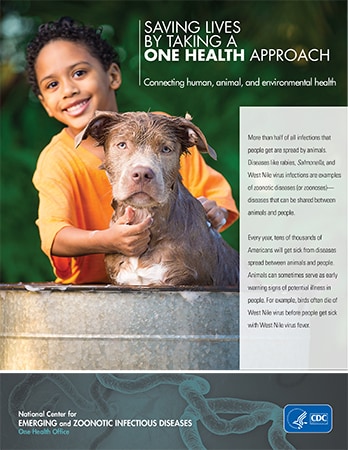The One Health concept recognizes that the health of people is connected to the health of animals and the environment. CDC uses a One Health approach by working with physicians, veterinarians, ecologists, and many others to monitor and control public health threats and to learn about how diseases spread among people, animals, and the environment.
One Health is defined as a collaborative, multisectoral, and trans-disciplinary approach — working at the local, regional, national, and global levels — with the goal of achieving optimal health outcomes recognizing the interconnection between people, animals, plants, and their shared environment.
There are many examples that show how the health of people is related to the health of animals and the environment. For instance, some diseases can be shared between animals and people. These diseases are known as zoonotic diseases. Examples include:
Animals also share our susceptibility to some diseases and environmental hazards. Because of this, they can serve as early warning signs of potential human illness. For example, birds often die of West Nile virus before people get sick with West Nile virus fever.
One Health is not a new concept, but it has become more important in recent years. This is because many factors have changed interactions between people, animals, and our environment. These changes have led to the emergence and reemergence of many diseases.






















.jpg)












No hay comentarios:
Publicar un comentario